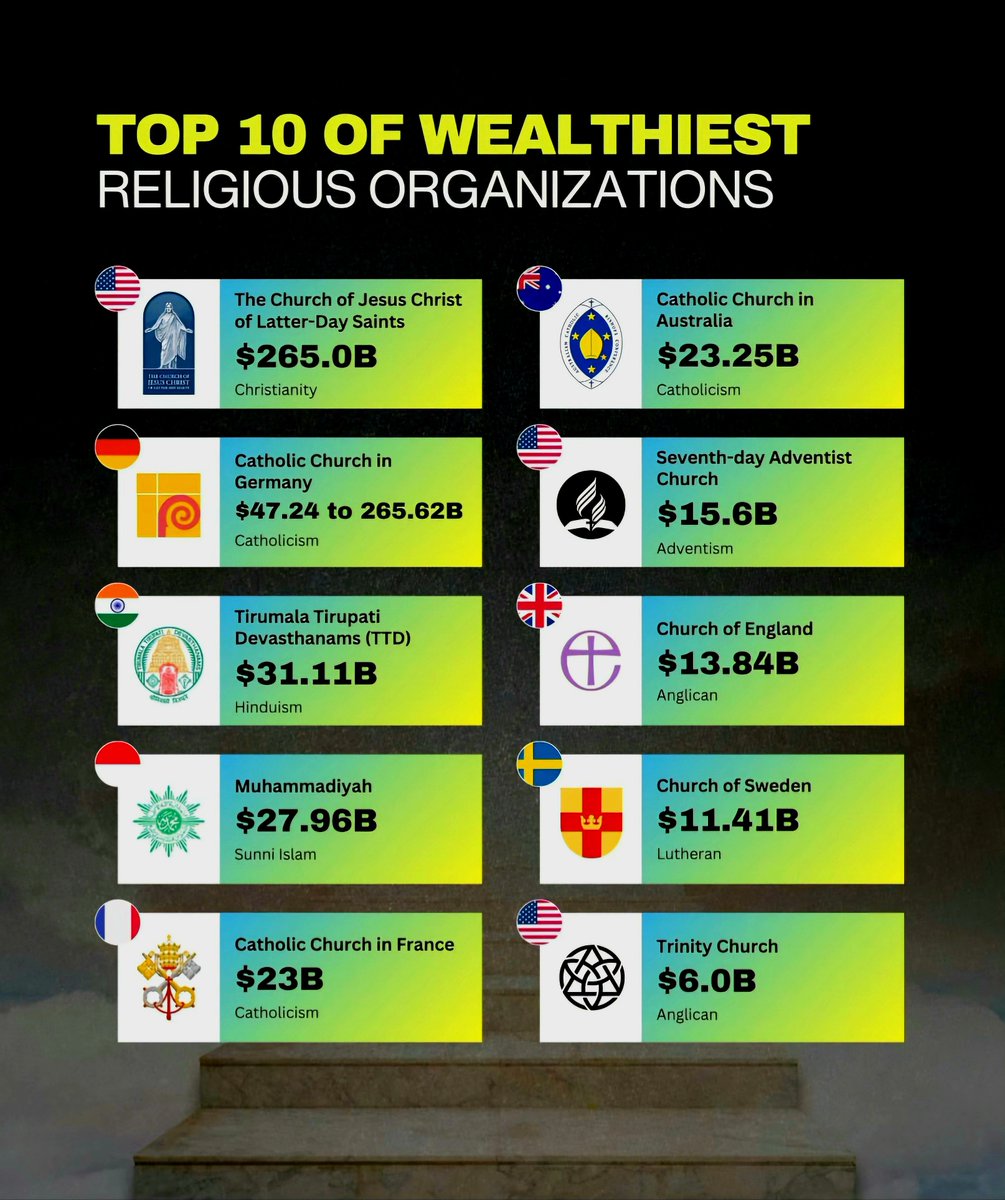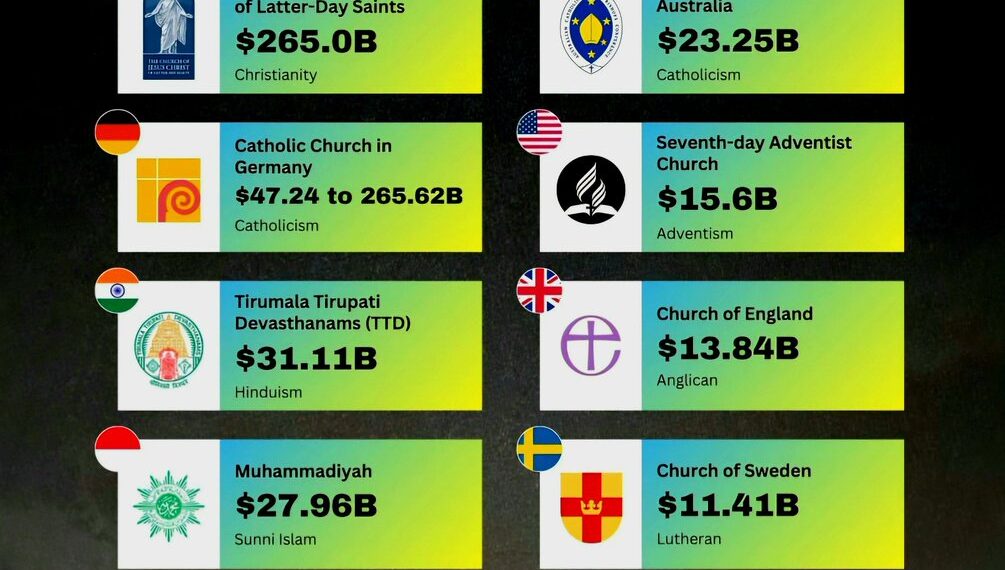Select Language:
The Wealthiest Religious Organizations of 2025
Religious organizations have long played significant roles in shaping communities, providing charity, and influencing culture. Over the years, some have amassed substantial financial resources, leading to questions about transparency, influence, and their role in society. As of 2025, these organizations stand out not only for their spiritual missions but also for their impressive financial holdings. Here’s a detailed look at the top 10 wealthiest religious organizations in 2025.

1. The Roman Catholic Church
- Estimated Wealth: Over $10 billion
- As the world’s largest Christian denomination, the Roman Catholic Church maintains extensive assets, including historic churches, private collections, and investments. Its global reach helps it generate billions annually through donations, real estate holdings, and investments.
- Key Revenue Sources: Donations from parishioners, investments, property sales, and tourism at famous sites like the Vatican Museums.
2. The Church of Jesus Christ of Latter-day Saints (LDS Church)
- Estimated Wealth: Around $100 billion
- The LDS Church is renowned for its diversified investments in real estate, agriculture, and business ventures worldwide. Its financial strength supports its extensive humanitarian and construction projects.
- Key Revenue Sources: Tithing, investments, commercial ventures, and real estate holdings.
3. Islamic Relief Worldwide
- Estimated Wealth: Approximately $2 billion
- As one of the leading Muslim charities, Islamic Relief Worldwide manages a broad portfolio of humanitarian initiatives and charitable programs across multiple countries, funded by donations and endowments.
- Key Revenue Sources: Donations, grants, and endowment funds.
4. The Jehovah’s Witnesses
- Estimated Wealth: Over $1.5 billion
- Known for their global publishing and evangelizing efforts, the Jehovah’s Witnesses possess considerable real estate holdings, including Kingdom Halls, printing facilities, and headquarters.
- Key Revenue Sources: Donations from members and sales of literature.
5. The Church of Scientology
- Estimated Wealth: Around $1.2 billion
- Operating with a high-profile presence and a network of centers worldwide, Scientology’s income is generated through courses, seminars, and donations from its members.
- Key Revenue Sources: Course fees, donations, and real estate investments.
6. The Seventh-day Adventist Church
- Estimated Wealth: Over $800 million
- As an influential Protestant denomination, it operates a vast network of hospitals, schools, and humanitarian agencies funded through donations and investments.
- Key Revenue Sources: Tithes, donations, and enterprise ventures.
7. The Hindu Nationalist Organizations
- Estimated Wealth: Around $700 million
- Some Hindu organizations and trusts owning temples, schools, and cultural centers, hold significant assets, often supported by large community donations.
- Key Revenue Sources: Donations, temple revenues, and cultural events.
8. The Sikh Religious Organizations
- Estimated Wealth: About $600 million
- Major Sikh trusts own large properties, Gurdwaras, and educational institutions, often supported by community fundraising and offerings.
- Key Revenue Sources: Donations and charitable activities.
9. The Falun Gong Movement
- Estimated Wealth: Approximately $400 million
- Despite being banned in China, Falun Gong maintains a global presence with strong fundraising efforts, donations, and media enterprises.
- Key Revenue Sources: Donations, media sales, and publishing.
10. The Unification Church
- Estimated Wealth: Close to $350 million
- The Unification Church, with its various affiliated organizations, accumulates wealth through religious services, media outlets, and international campaigns.
- Key Revenue Sources: Donations, sales, and real estate.
Conclusion
The landscape of religious wealth in 2025 reveals a diverse array of organizations, each leveraging different assets and revenue streams. While some such as the Catholic Church and LDS Church lead with vast financial portfolios, others are smaller but still influential within their communities. The transparency and management of these assets continue to spark debate as faith-based organizations navigate their roles as spiritual leaders and economic entities in modern society.







